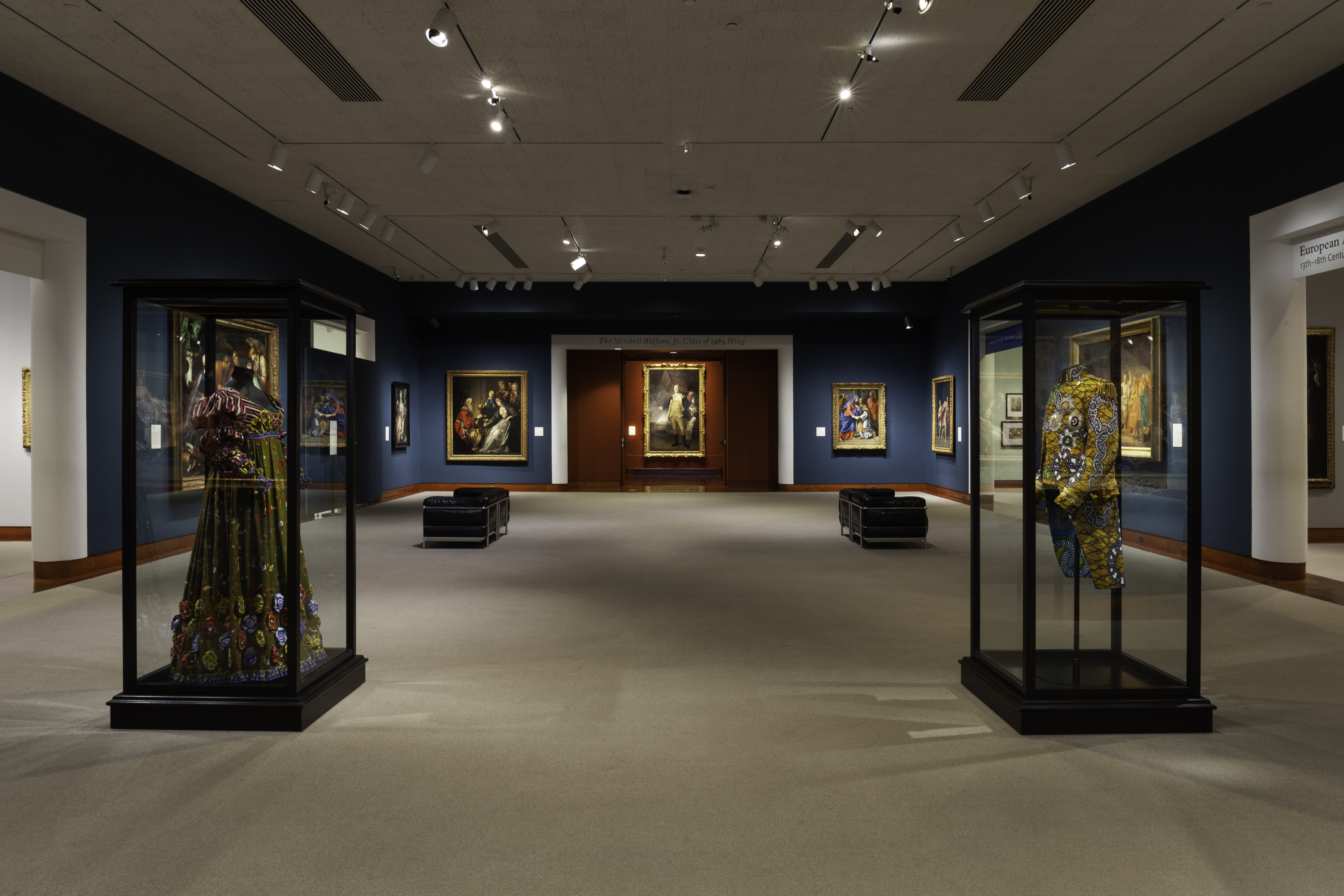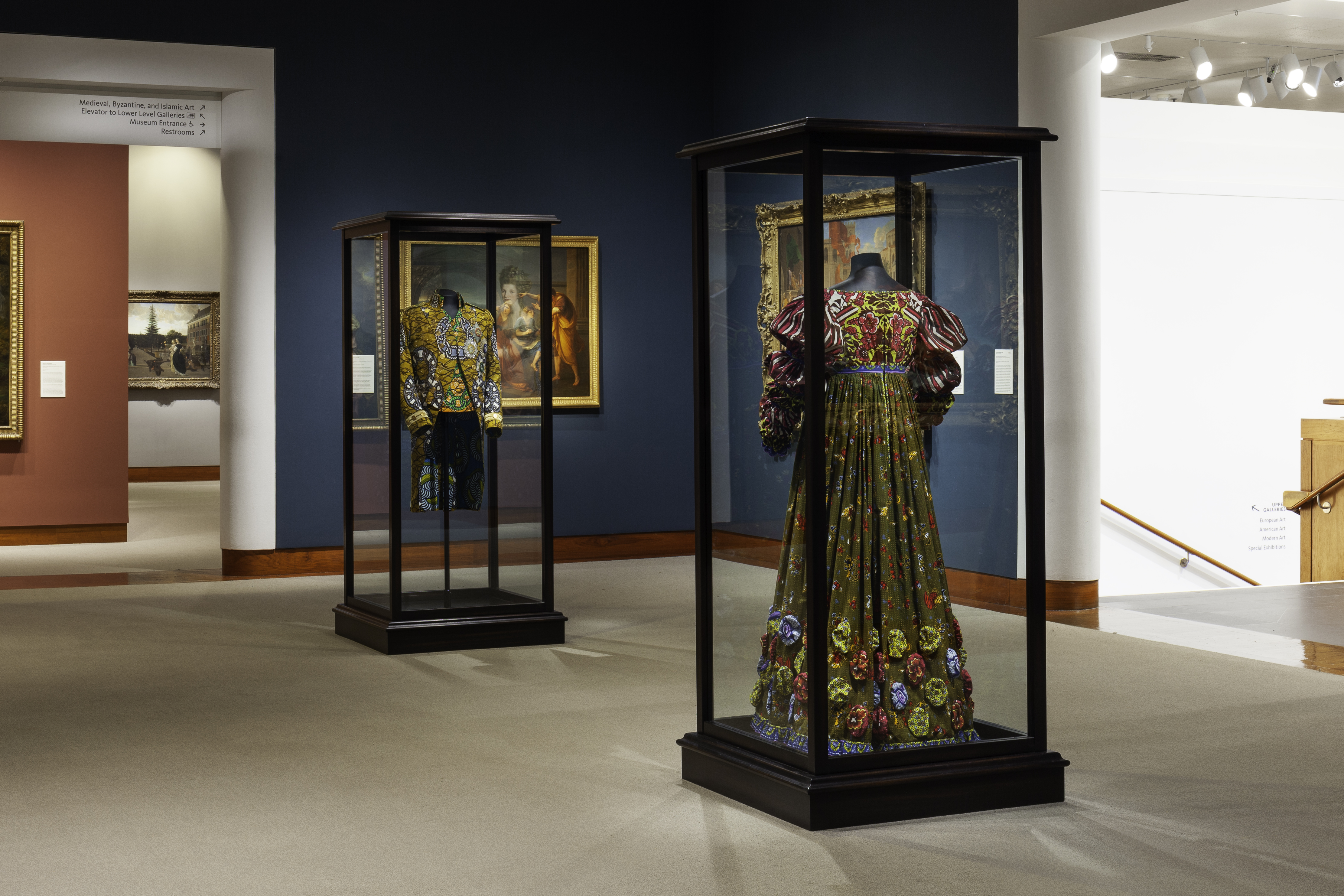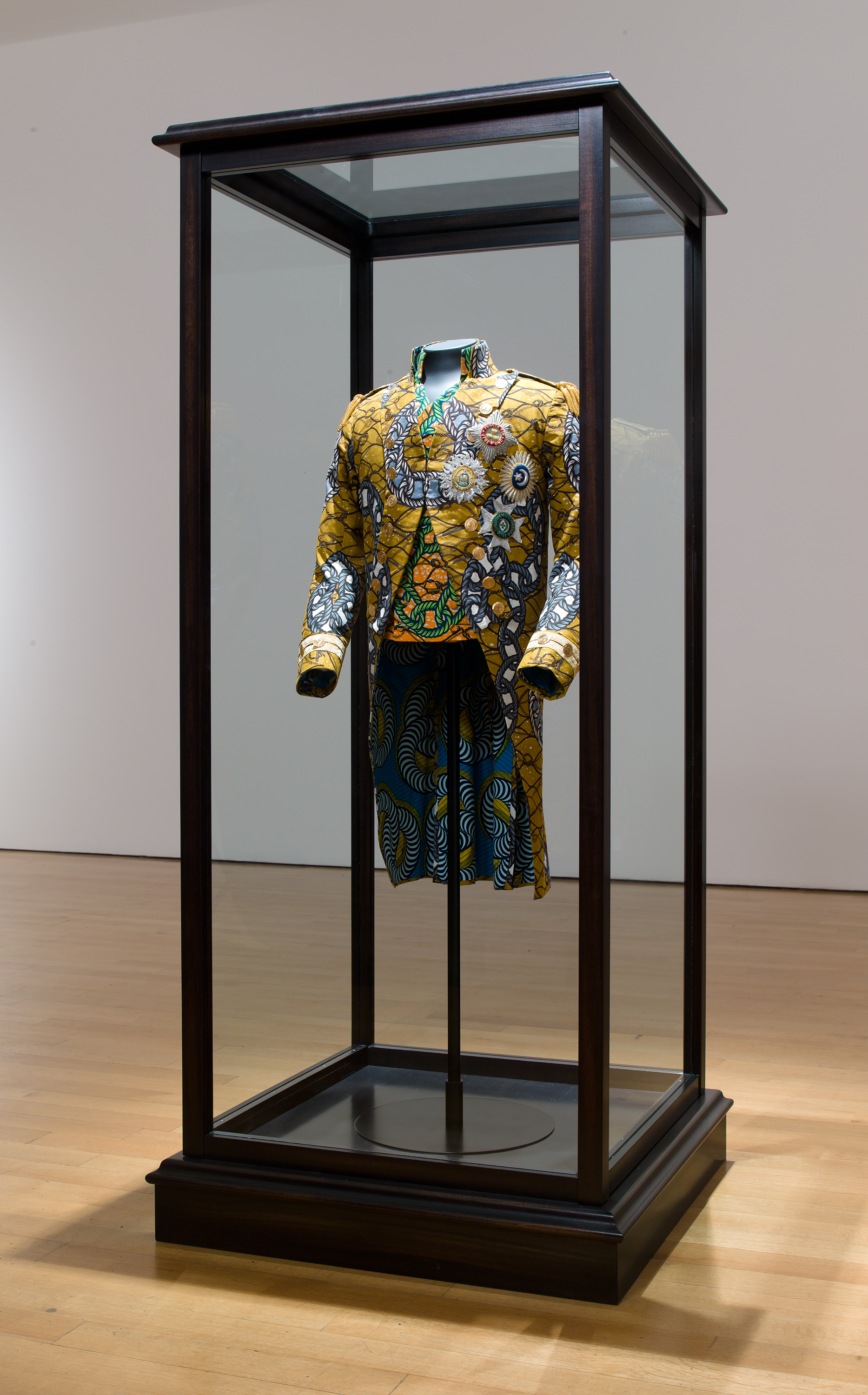New on View | Nelson’s Jacket and Fanny’s Dress
 A new acquisition by the acclaimed British-Nigerian artist Yinka Shonibare debuted in the Museum’s central gallery this spring, on view through the summer. In Nelson’s Jacket and Fanny’s Dress, mannequins clad in nineteenth-century era garments made from Dutch wax-cloth are encased in glass vitrines, waiting to be studied and scrutinized by curious viewers. The sculptural portrait pair depicts the eighteenth-century British naval commander Lord Nelson and his famously lovelorn wife, Fanny. The period garments—the formal coat of a vice admiral and the Empire silhouette of Fanny’s fashionable gown—are meticulously crafted from Dutch wax cloth, in a material representation of the layered legacy of Colonial Britain.
A new acquisition by the acclaimed British-Nigerian artist Yinka Shonibare debuted in the Museum’s central gallery this spring, on view through the summer. In Nelson’s Jacket and Fanny’s Dress, mannequins clad in nineteenth-century era garments made from Dutch wax-cloth are encased in glass vitrines, waiting to be studied and scrutinized by curious viewers. The sculptural portrait pair depicts the eighteenth-century British naval commander Lord Nelson and his famously lovelorn wife, Fanny. The period garments—the formal coat of a vice admiral and the Empire silhouette of Fanny’s fashionable gown—are meticulously crafted from Dutch wax cloth, in a material representation of the layered legacy of Colonial Britain.
 Inspired by Indonesian batiks, the Dutch and British both produced wax-resist cloth in their competition for control of West Africa—its land, people, and luxury market. As the cloth increasingly became associated with African fashion, it also appealed to the colonial impulse to collect and display the cultural artifacts of foreign lands. As a result, the cloth’s transnational history is woven into its fibers, making it a powerful symbol of cultural and political power structures and global luxury economies, all of which are also part of the legacy of Lord Nelson. By positioning these figures in glass vitrines, Shonibare broadens his examination of the legacy of British colonialism in West Africa to contemplate the responsibilities of museums as they relate to practices of collection and display.
Inspired by Indonesian batiks, the Dutch and British both produced wax-resist cloth in their competition for control of West Africa—its land, people, and luxury market. As the cloth increasingly became associated with African fashion, it also appealed to the colonial impulse to collect and display the cultural artifacts of foreign lands. As a result, the cloth’s transnational history is woven into its fibers, making it a powerful symbol of cultural and political power structures and global luxury economies, all of which are also part of the legacy of Lord Nelson. By positioning these figures in glass vitrines, Shonibare broadens his examination of the legacy of British colonialism in West Africa to contemplate the responsibilities of museums as they relate to practices of collection and display.
Both sculptures reference historical subjects. Lord Vice-Admiral Horatio Nelson (1758–1805) was a British naval commander best known for his unconventional tactics, leadership and numerous naval victories, particularly those against the French during the Napoleonic Wars. Nelson’s naval campaigns not only established British naval supremacy but opened waters, enabling international trade and fostering further colonial expansion. Nelson was fatally wounded during the Battle of Trafalgar in 1805, which was a victory for British forces, thus securing his status as a national hero and cementing the phrase “England expects every man will do his duty”—Nelson’s final signal— as a motto in the English psyche.

 Nelson’s wife, Frances “Fanny” Nisbet Nelson (1758–1831), was known for her devotion to her marriage and the legacy of Lord Nelson despite their very public and scandalous estrangement during his lifetime. Nelson carried on a public affair with Emma, Lady Hamilton, the wife of the British ambassador to Naples, Sir William Hamilton. Because of this adulterous relationship, Fanny was humiliated and disgraced, and she and Nelson became estranged and lived apart for the final years of the marriage. Shonibare’s sculpture, however, brings the often-forgotten Fanny back into Nelson’s historical narrative, underscoring the fallibility of powerful men and revealing the darker side of the hero’s tale. Furthermore, it highlights the often-forgotten or downplayed role of women in history.
Nelson’s wife, Frances “Fanny” Nisbet Nelson (1758–1831), was known for her devotion to her marriage and the legacy of Lord Nelson despite their very public and scandalous estrangement during his lifetime. Nelson carried on a public affair with Emma, Lady Hamilton, the wife of the British ambassador to Naples, Sir William Hamilton. Because of this adulterous relationship, Fanny was humiliated and disgraced, and she and Nelson became estranged and lived apart for the final years of the marriage. Shonibare’s sculpture, however, brings the often-forgotten Fanny back into Nelson’s historical narrative, underscoring the fallibility of powerful men and revealing the darker side of the hero’s tale. Furthermore, it highlights the often-forgotten or downplayed role of women in history.